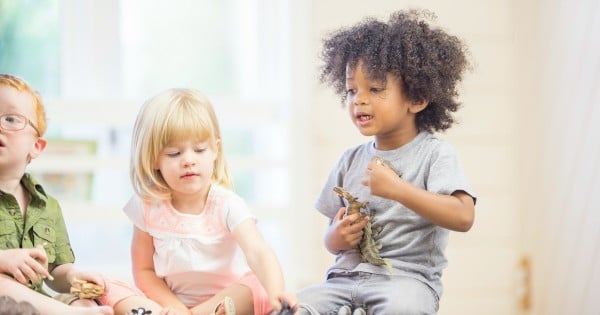

We all like to think we’ve raised our children to be wonderful human beings who will generously share with others. So it’s a bit of shock when your toddler takes possession of the toybox at playgroup, screams, “Mine!” and whacks all approaching kids on the head with a giant Elsa doll.
The fact is, sharing doesn’t come naturally to little kids. Two-year-olds are a bit young to grasp the concept. As far as they’re concerned, they’re the centre of the universe. They just can’t see things from anyone else’s point of view. Plus, the idea that someone else is going to play with their shiny red car for “just a few minutes,” isn’t something they can get their heads around.
From three to four years, toddlers can start to understand the idea of sharing. But it can still be a challenge, to hand over their toys to someone else, believe me – the screams are still ringing in my ears.
Yet, it’s an important thing to learn. A child who refuses to share anything will find it hard to make friends at preschool. Plus, we’ve all met those adults who write their names on their stapler at work or on their milk carton in the share-house fridge. Not attractive, is it?
Sure, sharing playtime and toys can mean kids end up sharing everything, including germs and worms, but an itchy bum can be quickly cleared up with a few of those “chocolate” squares. Ultimately, that’s a small price to pay for the joys of friendship and a happier schooling experience.
So, how do you get your child to become one of those lovely littlies who happily share with others? Well, here are a few things to try.


Top Comments
Lead by example? Ironic really, we spend a few years (usually successfully) teaching kids to:
Share, Tidy up your own meas, Dont be mean to other kids, call them names, pick on them or exclude them, Tell the truth, Apologise when you're wrong.
Then, when they're grown up, all that gets slammed as "political correctness gone mad" if they apply it to the real world.
And remember the first step in learning to share is not sharing.